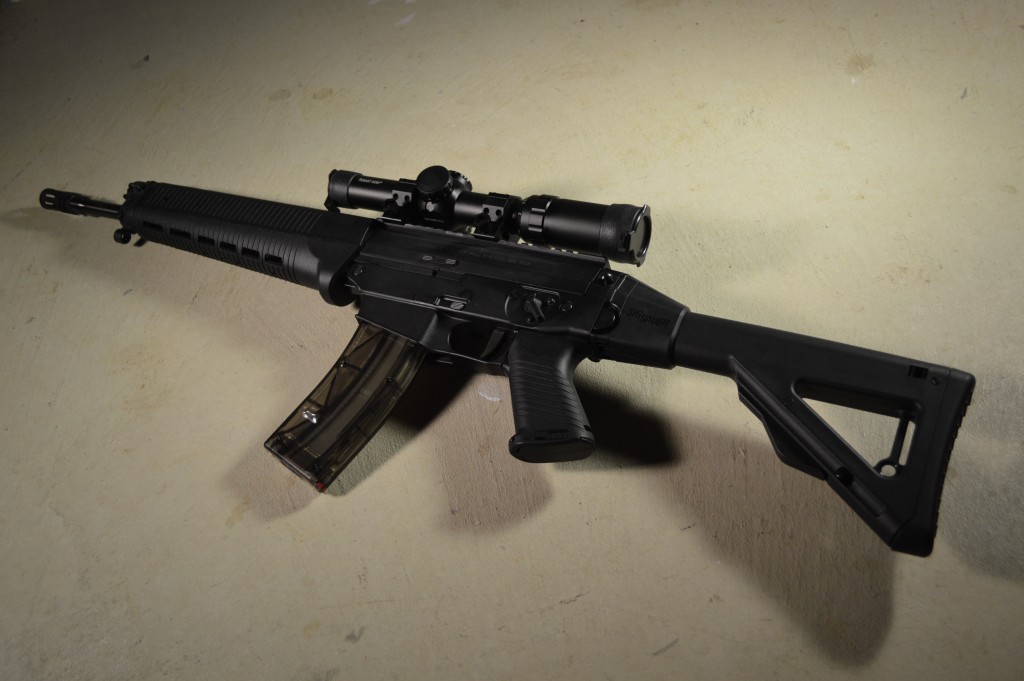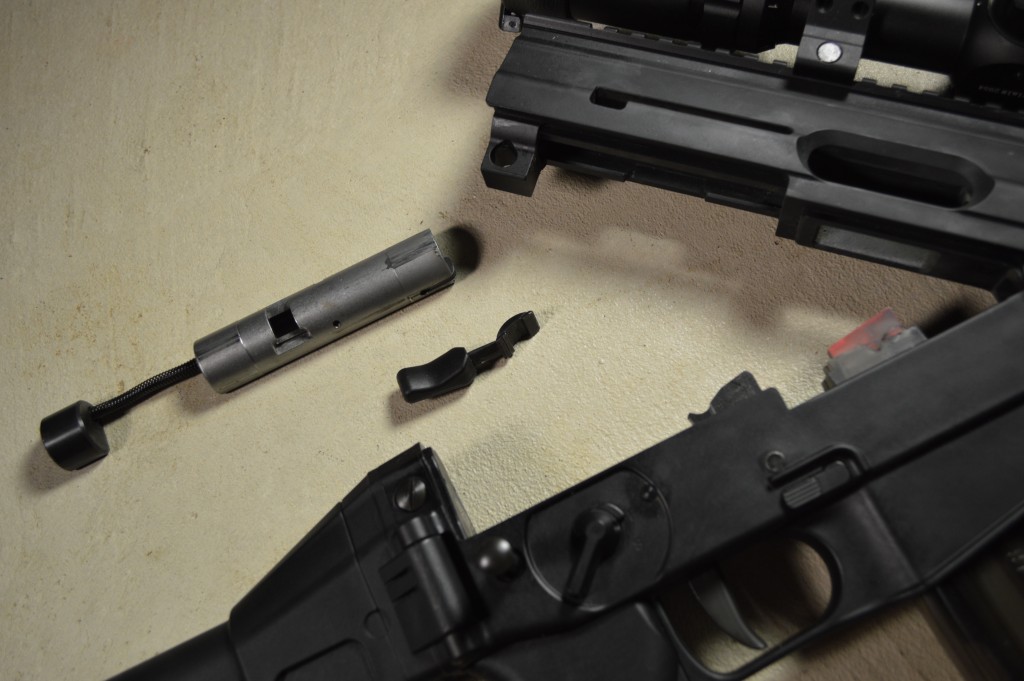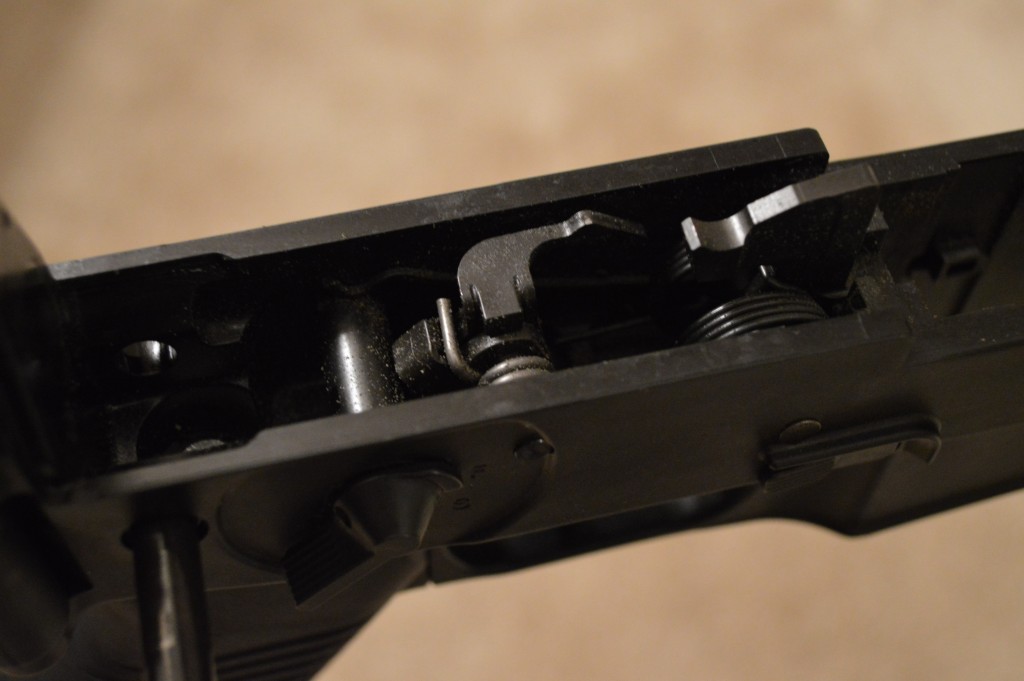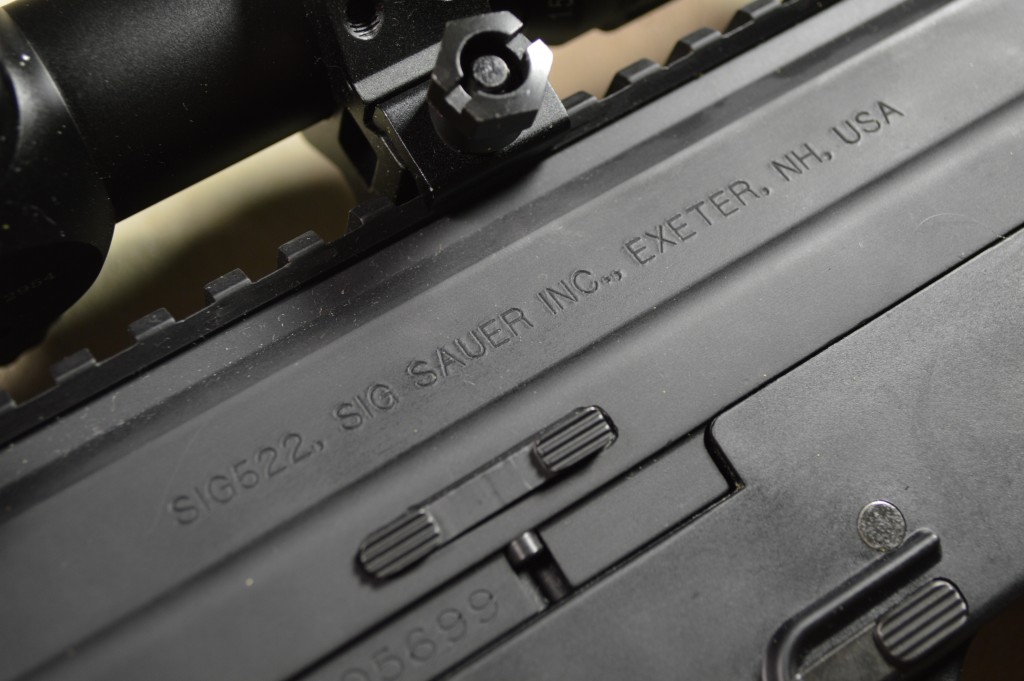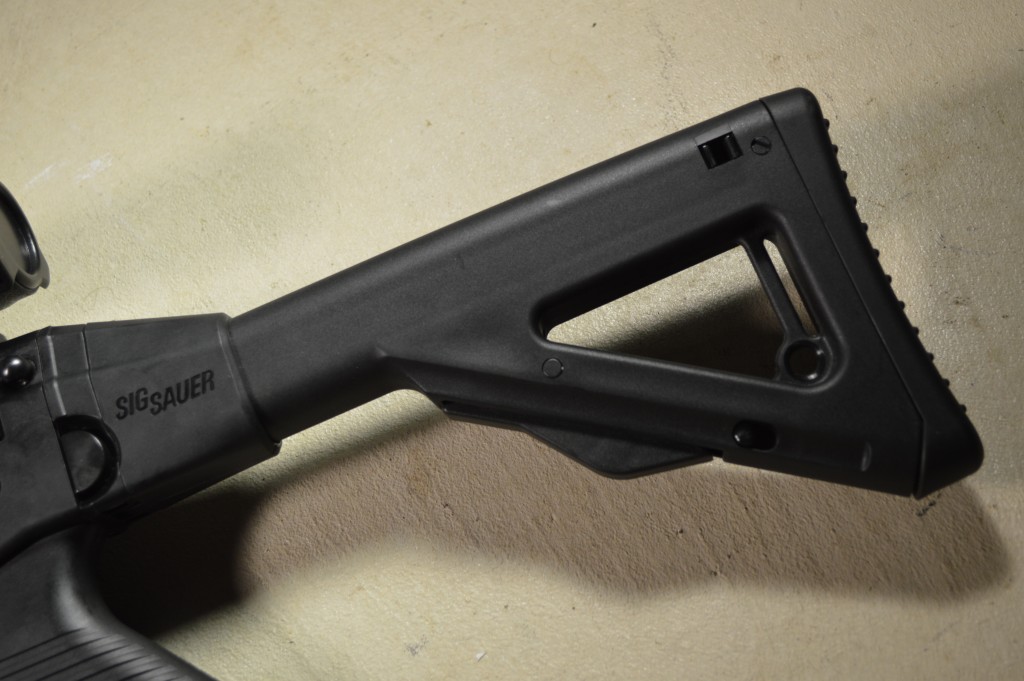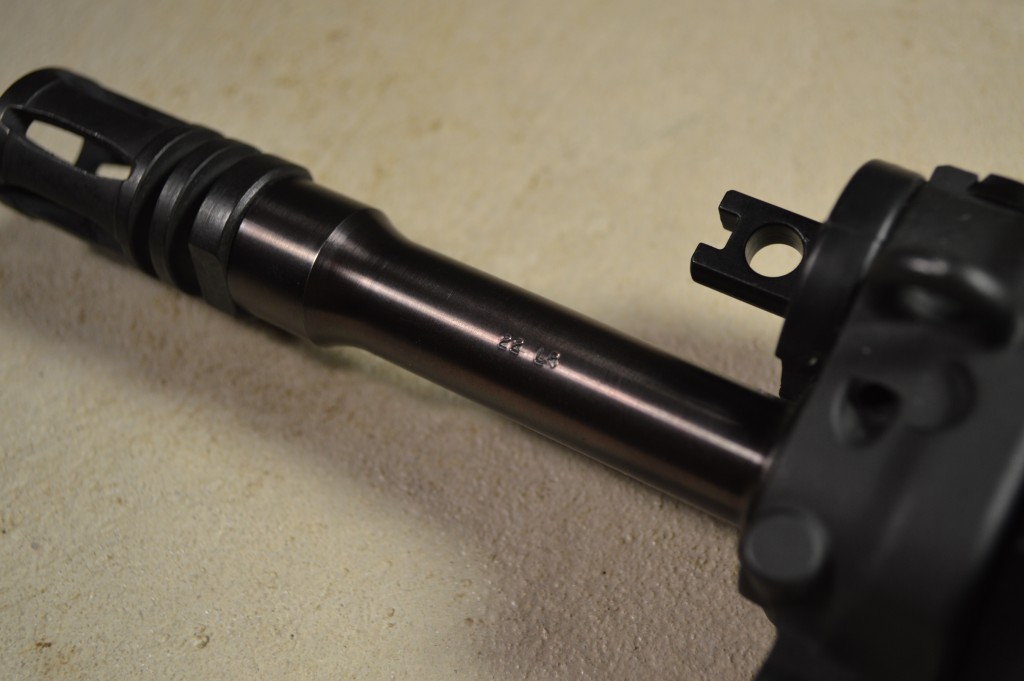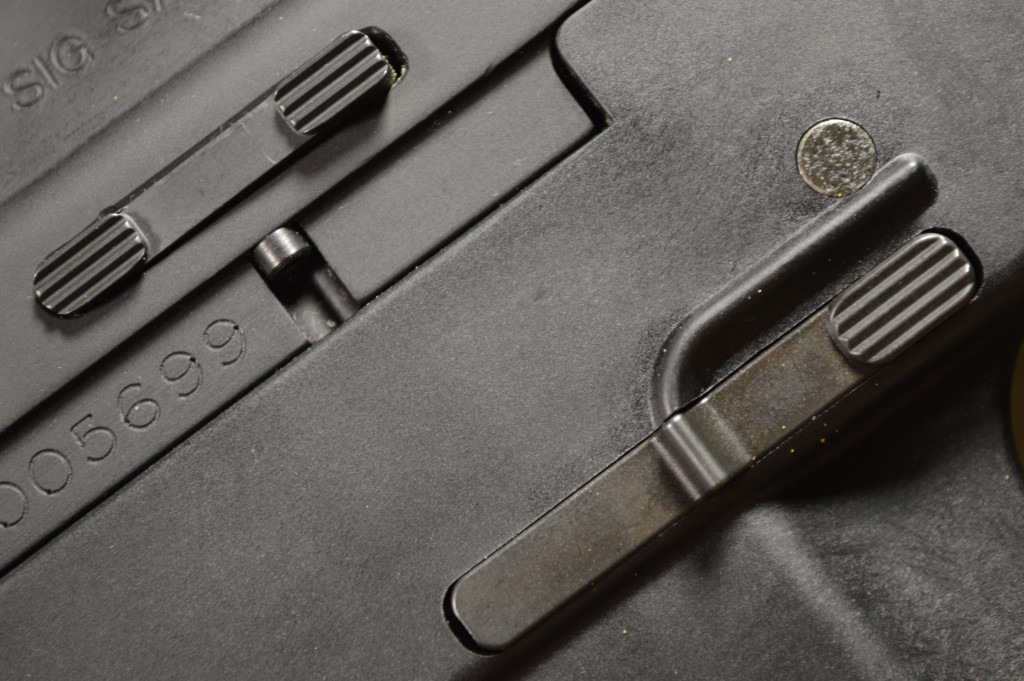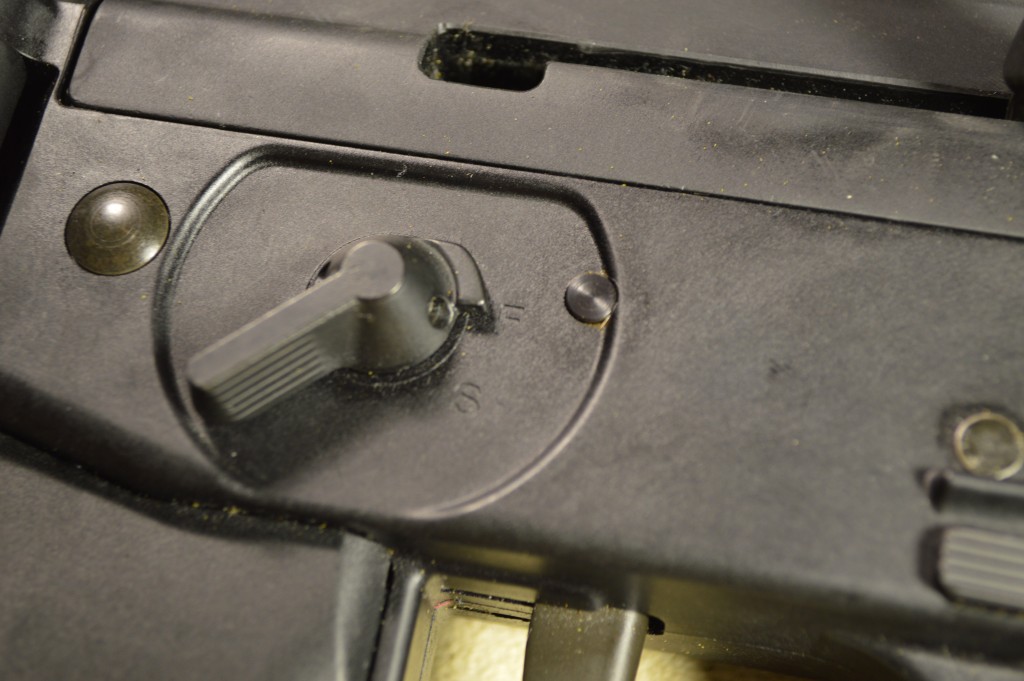SIG 522 Classic Review
Today we will take a look at SIG Sauer’s SIG 522. The SIG 522 is the .22 LR younger brother of the 5.56x45mm SIG 556 and closely replicates the centerfire version in terms of size, controls, and appearance. I have owned this rifle since 2010 and since purchase have fired approximately 6,000 rounds through it.
About the Rifle
Back when SIG announced the release of the SIG 522, the semi-automatic .22 LR market was a much different environment than the one we enjoy today. Aside from Smith & Wesson’s M&P 15-22 and ATI/German Sport Gun’s GSG-5, the SIG lacked significant competition in the “tactical” .22 LR space. Notably, while GSG used what essentially amounts to a self-contained .22 action inside an airsoft MP5 shell, both SIG and Smith & Wesson developed new, dedicated systems for their .22 offerings. Since I was just getting involved with shooting sports at the time, I felt I needed to pick up a .22 rifle that roughly replicated the feel of some of my centerfire rifles to use as a training tool. Ultimately, I chose the SIG 522 Classic for its aluminum-heavy construction and original design.
Original Rimfire Design
Disassembly of the SIG 522 is very similar to both the SIG 556 and the AR-15. Pushing out the captive takedown pin near the safety allows the aluminum upper receiver to be hinged upward. The receiver halves can then be completely separated by pressing out the front takedown pin.
Once open, the bolt assembly can easily be removed through the rear of the upper receiver. In contrast to the GSG-5/522 and the Walther .22 clones, the SIG does not have a self-contained bolt/internal rail system. Rather, the bolt on this rifle rides along aluminum rails that are machined directly into the upper receiver. Though both systems seem to work well, I prefer the SIG approach as it speaks to the fact that this rifle was designed from the ground up to be a high quality, dedicated .22 as opposed to simply adapting a generic system to the centerfire rifle’s appearance and controls. Like all popular semi-automatic rimfires, the SIG utilizes a simple straight blowback system.
The trigger on the SIG 522 is somewhat like the AR-15’s in terms of layout. However, from a feel perspective this trigger is a vastly different animal. Rather than having a clean single-stage break like the typical AR-15, the SIG has a trigger more similar to a two-stage with a very light second stage. Upon initial pull, there is a substantial amount of take up. After reaching a certain point, the tension in the trigger pull releases and the rifle fires.
Those used to the AR’s trigger will almost certainly find the SIG’s trigger to be somewhat awkward as it is not immediately clear when the trigger will break. However, the pull is very predictable and the reset is very short. Over travel on the SIG’s trigger is almost non-existent. I must admit, because I am a fan of two-stage triggers, I like the 522’s. My only gripe is the relatively heavy pull, but this can be addressed by modifying AR-15 trigger springs to replace SIG’s stock one.
The barrel on the SIG is perhaps the most impressive part on the rifle. Rather than use the thin inner lining approach that is common in the Walther made guns, SIG opted for a full steel barrel with a nice blued finish. Though the Walther barrels seem to work well in practice, SIG’s approach is much more impressive and makes for a very accurate firearm.
Furniture & Finish
Externally, the SIG is quite attractive with its anodized aluminum upper receiver and matte black polymer furniture. While the upper receiver is aluminum, the lower receiver is high-strength polymer like the furniture. The trigger parts are all steel, but the external portion of the safety is polymer.
This particular model features a non-railed polymer fore-end similar to the one found on the popular SIG 551 and a classic SIG style grip. In comparison to a traditional AR-15 or AK grip, this has a slightly thinner feel, but is wider from front to back. It is a comfortable grip, but is otherwise forgettable. It does feature a storage compartment for extra accessories.
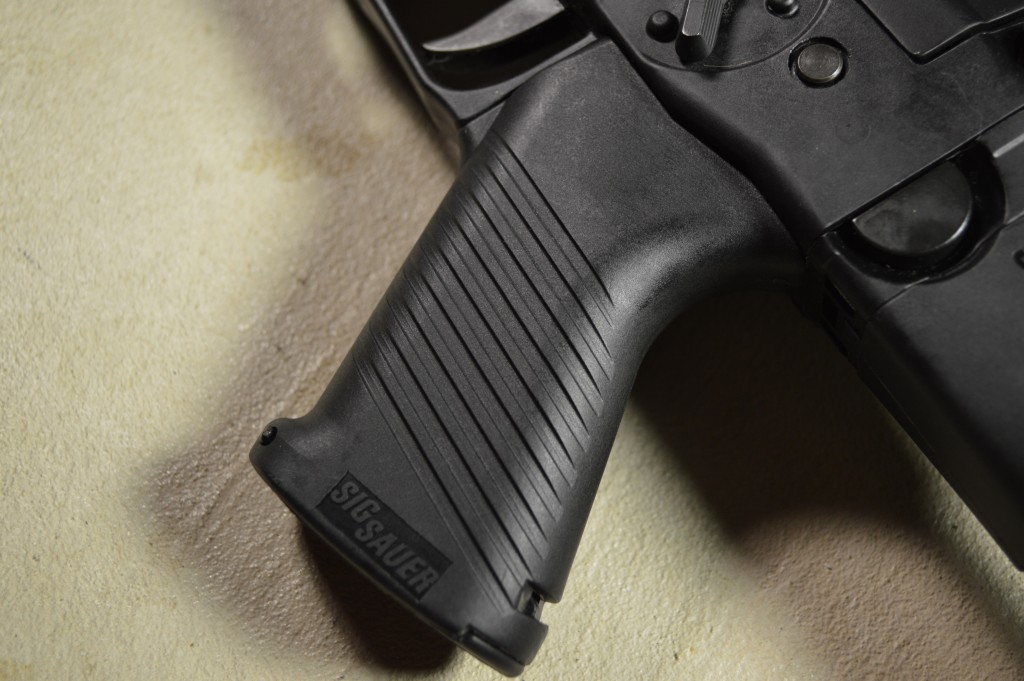
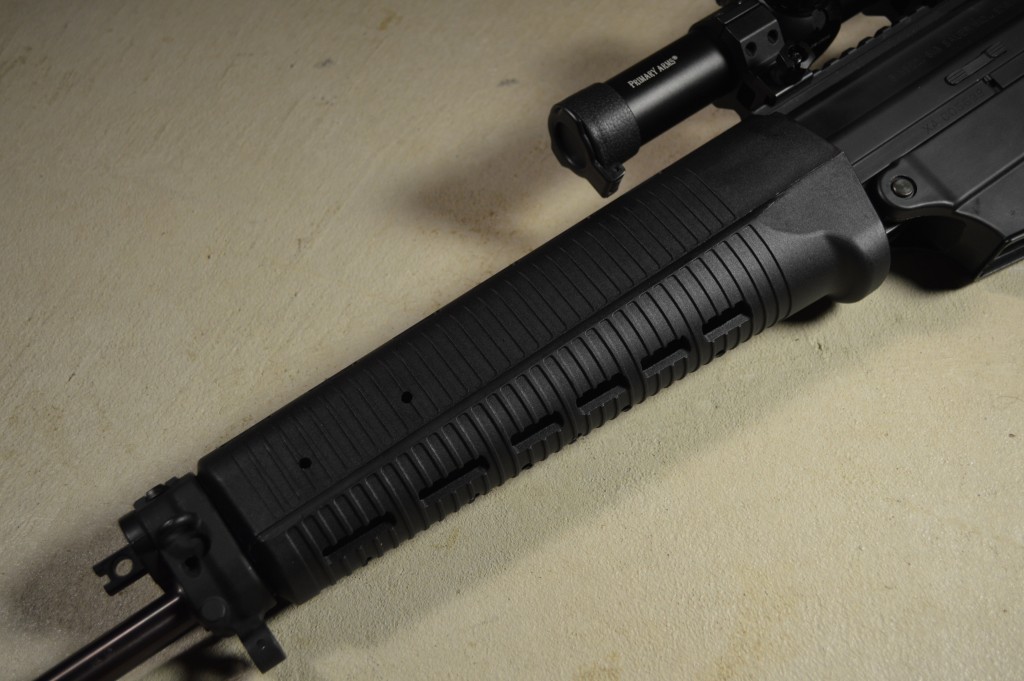
Because this is an earlier example of the 522, this rifle came with a folding stock that also collapses. The stock can be adjusted for three different lengths of pull using a small triangle shaped lever on the underneath side. When fully extended, the stock does display noticeable wobble, but not enough to seriously affect stability while shooting. In order to lock the stock in the folded position, it must be fully extended. This folding can be done by pressing the button on the left side of the assembly and pressing the stock firmly against the right side of the rifle. It should be noted that current 522s come with a Swiss style folding stock that replicates the ones on the 550 series rifles. These newer stocks do not adjust for length, but also do not wobble like the collapsible versions.
Additional features found on the SIG 522 Classic include an A1-style birdcage flash hider with standard 1/2×28 threads underneath, a rubber butt-pad, and an ambidextrous magazine release. There are a multitude of sling mounting points on the 522 so just about any sling configuration will work with this rifle. The SIG also features a bolt hold open. However, this must be activated manually and does not hold the bolt open on an empty magazine (the magazines have a follower that does this).
Missing: Sights
Current SIG 522 Classics are sold with Williams peep-style iron sights, however these were not offered with the rifle when I purchased it. Because of this, I will not speak to the sights on these rifles. I can say that the Primary Arms PA14X scope that I use with mine is an excellent option for this rifle.
Magazines
With the wide variety of semi-automatic .22 rifles on the market today, there seems to be an equally varied assortment of magazines designed to feed these firearms. Fortunately, SIG opted for a winner in this category. Rather than reinvent the wheel, SIG chose to use the highly respected magazines from Black Dog Machine (BDM) that were originally designed for the Ceiner/CMMG .22 LR bolt kits for the AR-15.
Not only have these magazines been proven performers, but they also have plenty of support from BDM and CMMG in terms of continual improvements and availability. Unlike similar rimfire options, additional magazines for the SIG 522 are both inexpensive and easy to find. I have both the second generation BDM (SIG labeled) magazine that came with the rifle and a few of BDM’s third generation magazines that look more like the centerfire AR-15 magazines. Both styles are incredibly reliable and easy to load/clean. I also prefer the closed magazine design that BDM uses. Many users would probably prefer to have a tab to assist in depressing the follower for loading. This is a feature I know I would not use and I would be concerned about reliability were the rifle to use an open design such as that found on the S&W and Walther rifles.
Range Report
Unlike my other reviews, I will not be using this range report section to address any specific trip or testing. The SIG was the first firearm I ever shot and I still remember my first day out with it. Since then, I have fired over 6,000 rounds and several different brands of ammunition through the rifle with few issues.
Back in 2014, I did encounter one serious failure with this rifle. Shortly after release, SIG Sauer acknowledged a weakness in the recoil system of the 522 that could result in a failure to return to battery if an e-clip used to retain the recoil spring were to break. This issue reportedly affects only early production guns like mine and SIG has redesigned this area of the firearm to prevent such issues on newer rifles. After contacting SIG, I purchased the new parts and the rifle hasn’t failed me since. What left a sour taste in my mouth was the fact that I had to pay $20 to replace a known-bad part. I understand these parts aren’t free for SIG to produce, but it’s bad form to charge customers for a known problem.
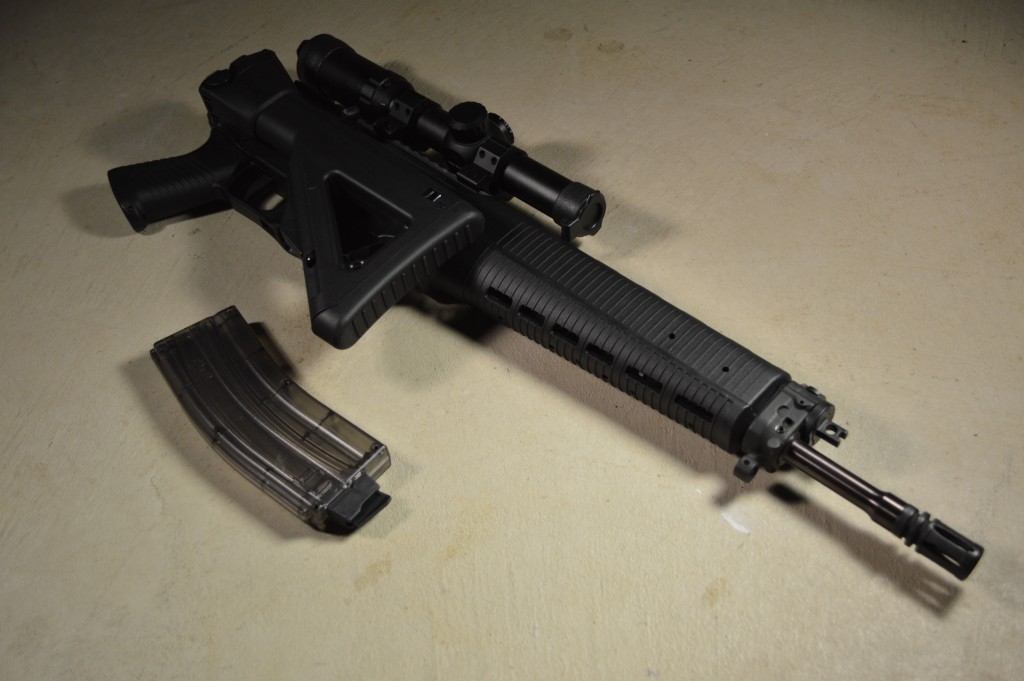

Despite the malfunction, I still rank this rifle among the best semi-automatic .22s ever to hit the market. New rifles do not have the issue I outlined above and it is refreshing to see that SIG addressed the problem quickly with minor design modifications. In terms of accuracy, the SIG is as good as a factory rifle gets. I have managed half-dollar sized ragged holes with this gun in groups of 10 to 15 rounds using Federal Champion bulk ammo at 25 yards and without magnification. That is approaching the limits of my skill and more than acceptable for a trainer like the 522. Recoil on this rifle is minimal as would be expected from any rimfire firearm.
Conclusion
Unless buyers are looking for a rifle that exactly imitates the function of their AR-15, the SIG 522 is quite possibly the best semi-automatic .22 training rifle on the market. The SIG is an accurate and easy to use firearm that carries substantial appeal for experienced as well as new shooters. I have no doubts that this rifle will outlast me. While I am somewhat disappointed in how the replacement of the flawed parts has played out, this is not an issue for new rifles today and I will not let it affect my decision to highly recommend this rifle.
Plus-Minus
+ Very reliable overall
+ Perfect weight/balance
+ Excellent magazines
+ Impressive aluminum upper receiver with ample rail space
+ Accurate barrel that is a tier above the competition
+ Reliable with all types of ammunition
+ Comes in a nice hard case
– Sights not included
– Stock wobbles (new ones that use the non-collapsing Swiss stock do not)
– Flawed recoil system (fixed in new rifles)
– Somewhat heavy trigger spring
An information security professional by day and gun blogger by night, Nathan started his firearms journey at 16 years old as a collector of C&R rifles. These days, you’re likely to find him shooting something a bit more modern – and usually equipped with a suppressor – but his passion for firearms with military heritage has never waned. Over the last five years, Nathan has written about a variety of firearms topics, including Second Amendment politics and gun and gear reviews. When he isn’t shooting or writing, Nathan nerds out over computers, 3D printing, and Star Wars.


